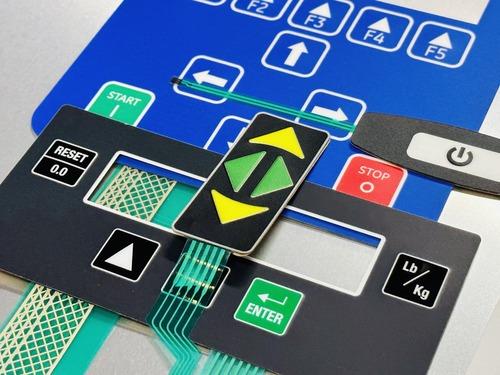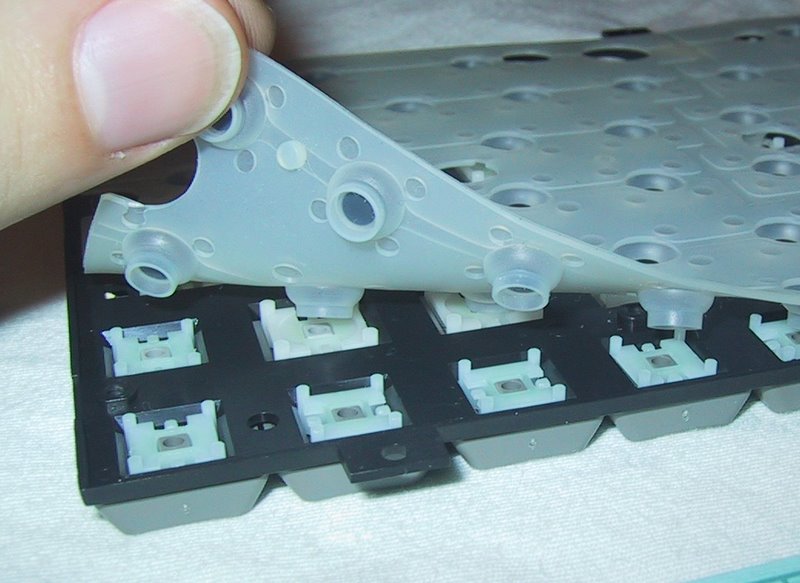Exploring the Future of Membrane Switches in Emerging Technologies
Exploring the Future of Membrane Switches in Emerging Technologies
Blog Article
Understanding the Significance of Membrane Switches in Interface
Membrane switches are indispensable components in the layout of reliable user interfaces, promoting not just performance however also boosting visual charm and individual communication. Their special functions, such as resistance to customizable layouts and environmental factors, make them ideal for a diverse array of applications across multiple markets. As we explore the future patterns and numerous advantages related to Membrane modern technology, it comes to be clear that these switches are extra than just parts; they stand for a convergence of innovation and usefulness. The effects of this technology on user experience are worth taking a look at even more.
What Are Membrane Switches?

The spacer layer, which consists of adhesive residential properties, permits the separation of the circuit layer from the overlay, making sure that the switch remains in a non-activated state up until pushed. When pressure is related to the overlay, it compresses the spacer layer, connecting the space and finishing the circuit in the underlying layer. This style not only reduces the physical space required for traditional mechanical switches however additionally boosts the durability of the tool, as Membrane buttons are generally immune to dirt, moisture, and various other environmental elements.
Typically located in applications ranging from consumer electronics to clinical gadgets, Membrane buttons are essential to contemporary technology, giving a reliable and user-friendly user interface that aligns with modern design requirements.
Advantages of Membrane Switches
While numerous switch innovations exist, Membrane Switches offer distinctive advantages that make them specifically preferable in various applications. One of the key advantages of Membrane switches is their compact layout, which permits for space-saving applications in tools where realty is restricted. Their slim account not just improves visual allure but likewise facilitates lightweight building.
One more considerable benefit is their resistance to ecological factors. Membrane switches are typically secured versus moisture, dirt, and contaminants, making them suitable for usage sought after atmospheres, such as medical tools and commercial devices. This toughness prolongs the life expectancy of the button, decreasing maintenance expenses and enhancing integrity.
In addition, Membrane switches can be customized to meet particular layout needs, integrating distinct graphics and colors that improve customer communication. Their tactile comments options can also be tailored to provide an enjoyable individual experience. Furthermore, Membrane switches are affordable, particularly in high-volume applications, as they can be generated successfully.
Applications in Numerous Industries

In the customer electronic devices industry, Membrane buttons are prevalent in tools such as microwaves, cleaning equipments, and remotes. Their tactile feedback and aesthetic alternatives improve user experience while providing a smooth, modern-day appearance. In addition, automotive manufacturers utilize Membrane switches in dashboard controls and infotainment systems, where room is limited, and customer involvement is crucial.
Moreover, the commercial sector leverages Membrane buttons in control panels for machinery and tools, enabling for intuitive operation in usually harsh settings. Their resistance to chemicals and wetness makes certain long life and reliability in these applications. In general, the adaptability of Membrane Switches contributes dramatically to their widespread use, making them indispensable in different technical domain names.
Style Considerations for Membrane Buttons

When designing Membrane switches, several key considerations should be considered to make certain ideal functionality and individual experience. First of all, the option of materials is vital; selecting sturdy, top quality substratums can boost the button's durability and resistance to environmental elements such as moisture and temperature changes.
Secondly, the style of the visuals overlay should focus on clearness and convenience of use. Symbols and message should be readable, and the format must promote instinctive communication (membrane switches). Additionally, tactile responses is important; integrating a responsive dome or various other systems can boost the customer experience by offering physical confirmation of activation
One more vital variable is the button's electrical efficiency. Designers have to ensure that the conductive traces are correctly made to minimize resistance and avoid signal disturbance. This entails evaluating the called for actuation pressure and guaranteeing compatibility with the electronic parts they will certainly user interface with.

Future Trends in Membrane Technology
As modern technology proceeds to advance, Membrane buttons are poised to progress dramatically, driven by technologies in products and making methods. One emerging fad is the unification of advanced materials, such as conductive inks and flexible substratums, which improve resilience and lower the general weight of Membrane buttons. These products not only enhance the responsive feedback but additionally permit the style of switches that can hold up against harsher environmental conditions.
Additionally, the integration of touch-sensitive modern technologies is transforming conventional Membrane Switches into more interactive user interfaces. Capacitive touch sensing hop over to these guys units installed within Membrane button panels can give a much more user-friendly and responsive user experience, aligning with the expanding demand for sleek, contemporary layouts in consumer electronic devices.
Additionally, improvements in printing strategies, such as electronic and 3D printing, make it possible for rapid prototyping and customization of Membrane switches. This versatility allows makers to react quicker to market demands and consumer choices.
Finally, sustainability is coming to be a considerable focus, with makers checking out eco-friendly materials and procedures. As these trends unravel, the future of Membrane innovation assures improved functionality, visual charm, and ecological responsibility, strengthening their duty in advanced user interfaces throughout various sectors.
Final Thought
In conclusion, Membrane Switches stand for a crucial component in the style of individual interfaces, integrating functionality with visual flexibility. As improvements in browse around this site technology continue, the development of Membrane buttons is anticipated to additional refine individual interfaces, driving innovation and boosting functionality in a progressively complex technological landscape.
Membrane buttons are integral parts in the layout of effective customer interfaces, helping with not only functionality however likewise boosting aesthetic allure and user interaction.Membrane Switches offer as a vital part in various customer interfaces, assisting in a smooth interaction between users and digital gadgets.While countless switch technologies exist, Membrane Switches offer distinct advantages that make them particularly preferable in various applications.In addition, Membrane buttons can be tailored to satisfy specific design demands, including distinct graphics and shades that improve individual interaction.In verdict, Membrane Switches stand for an important element in the layout of customer interfaces, incorporating functionality with visual adaptability.
Report this page